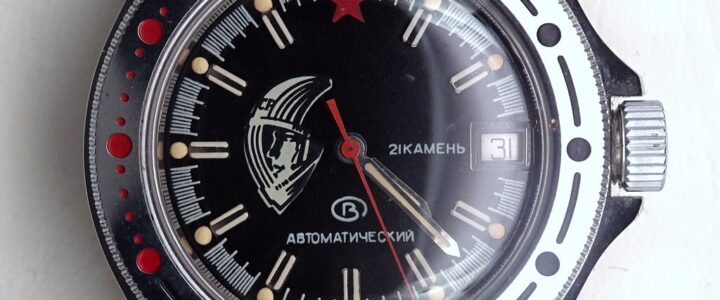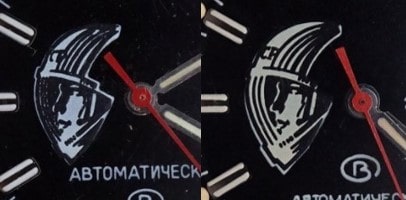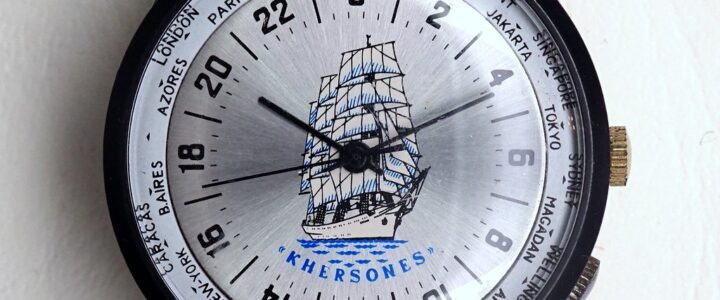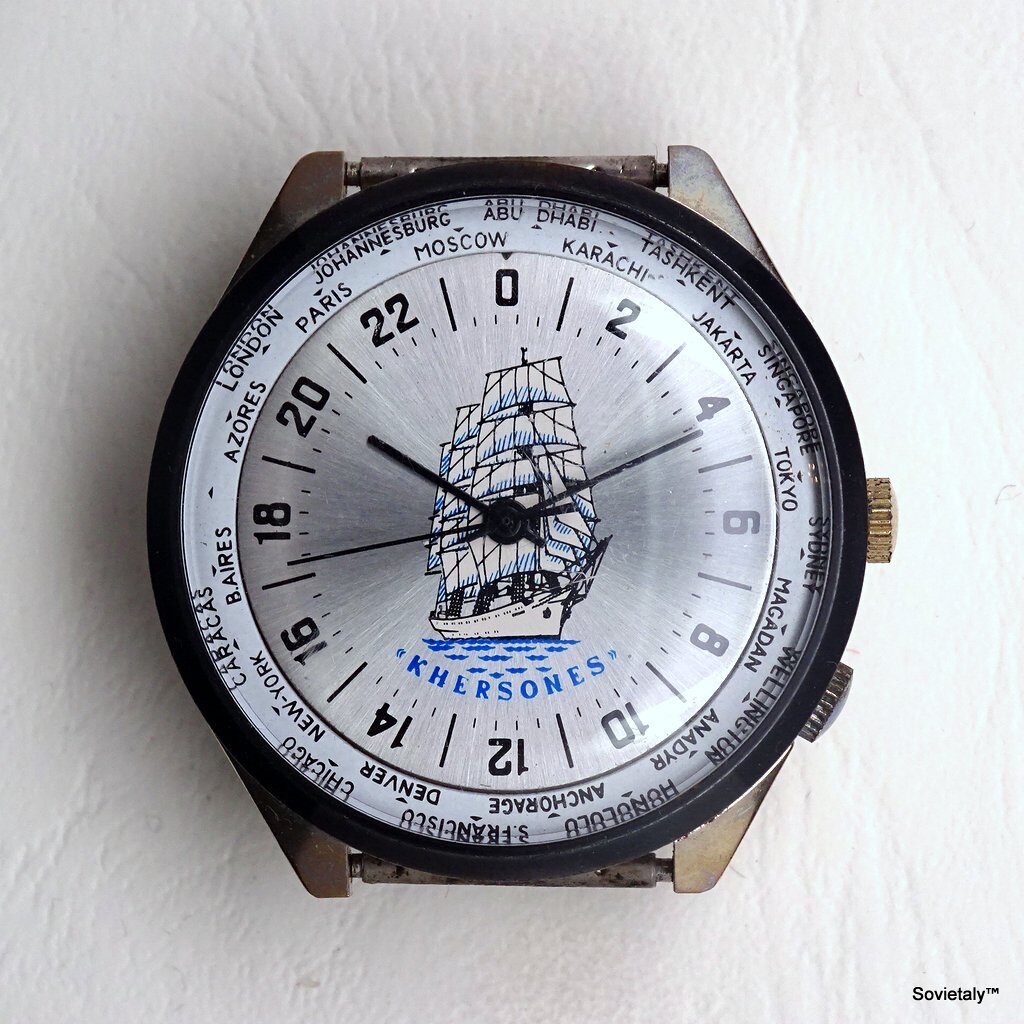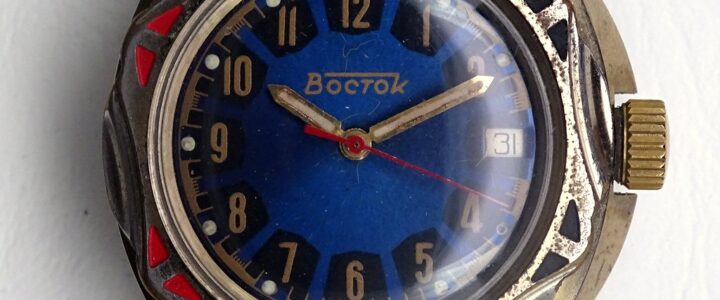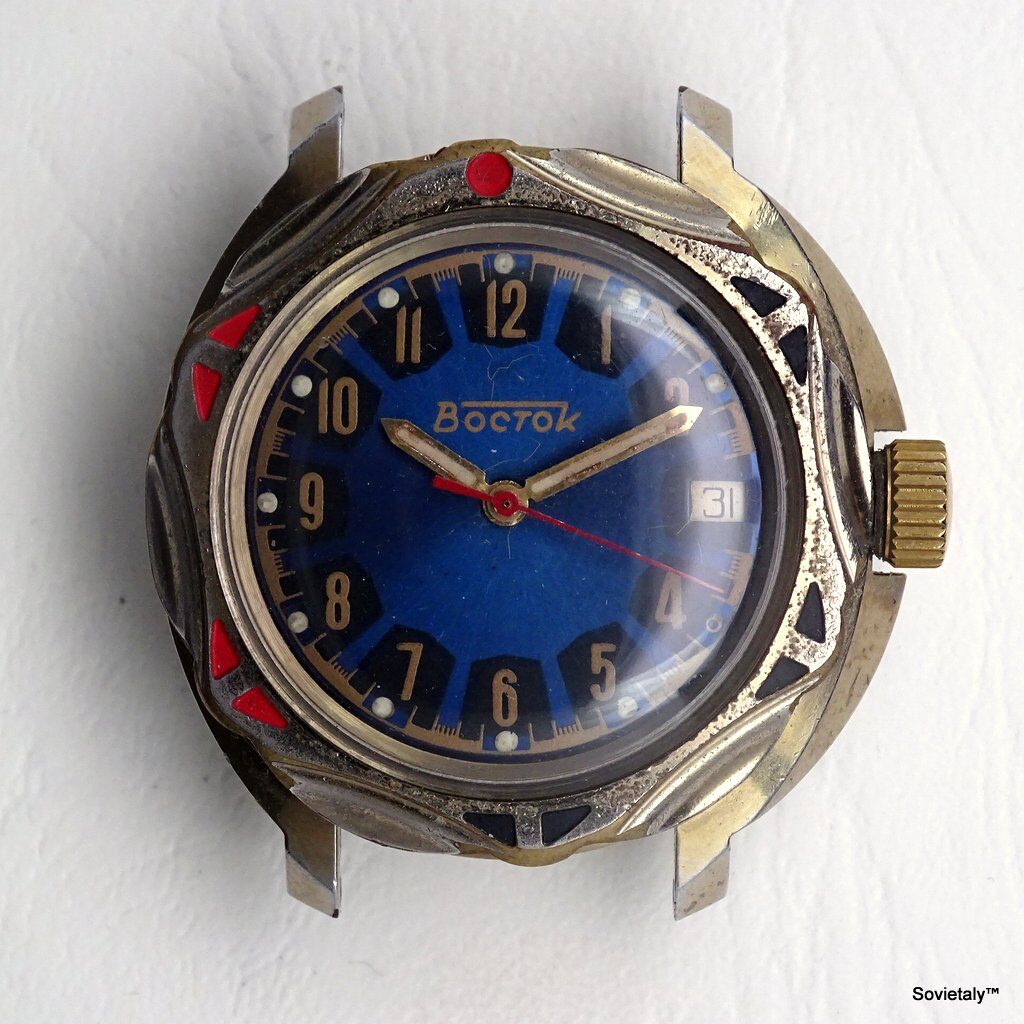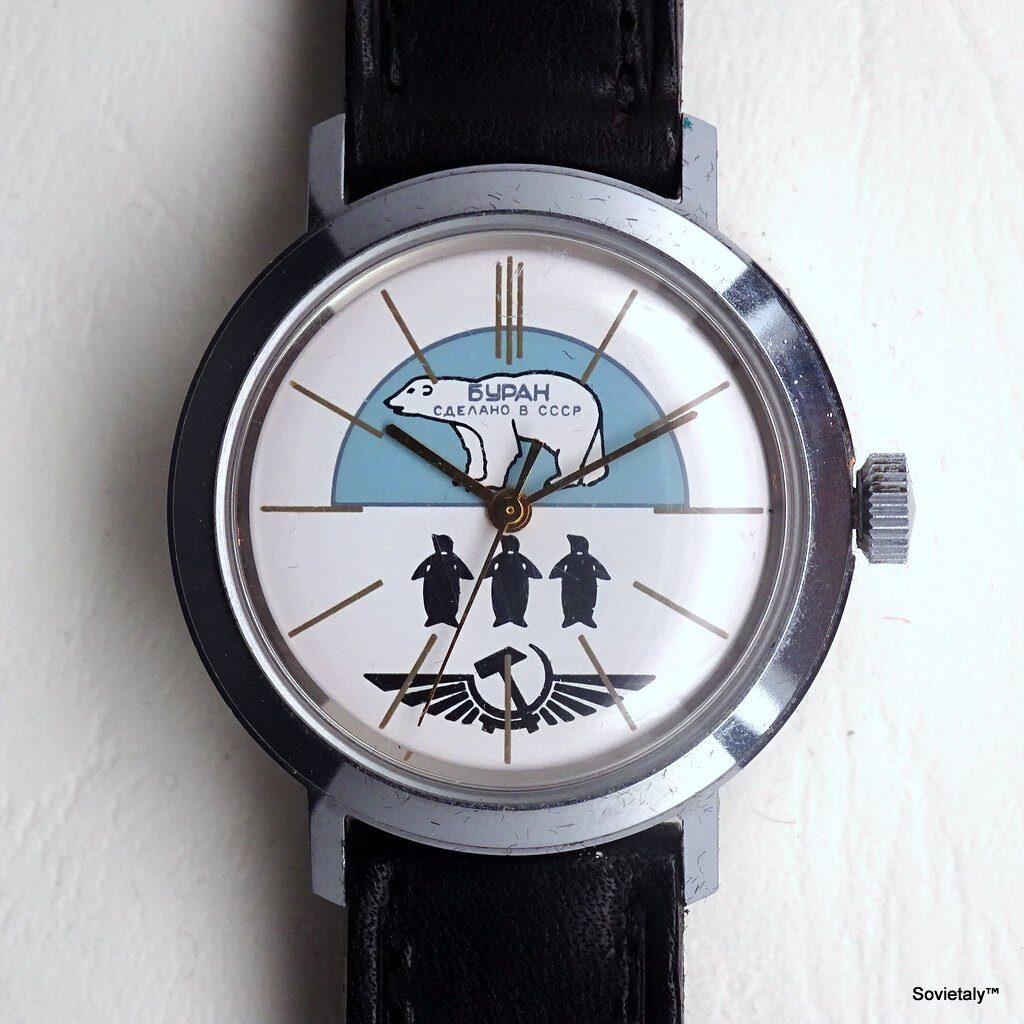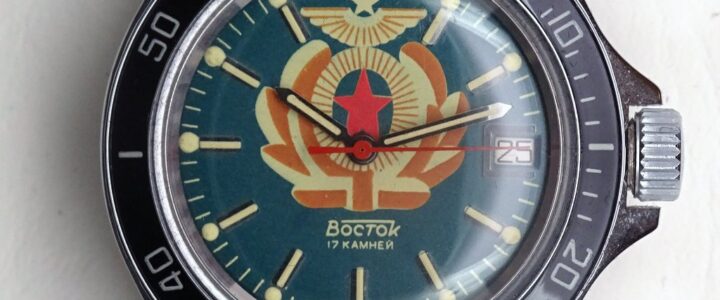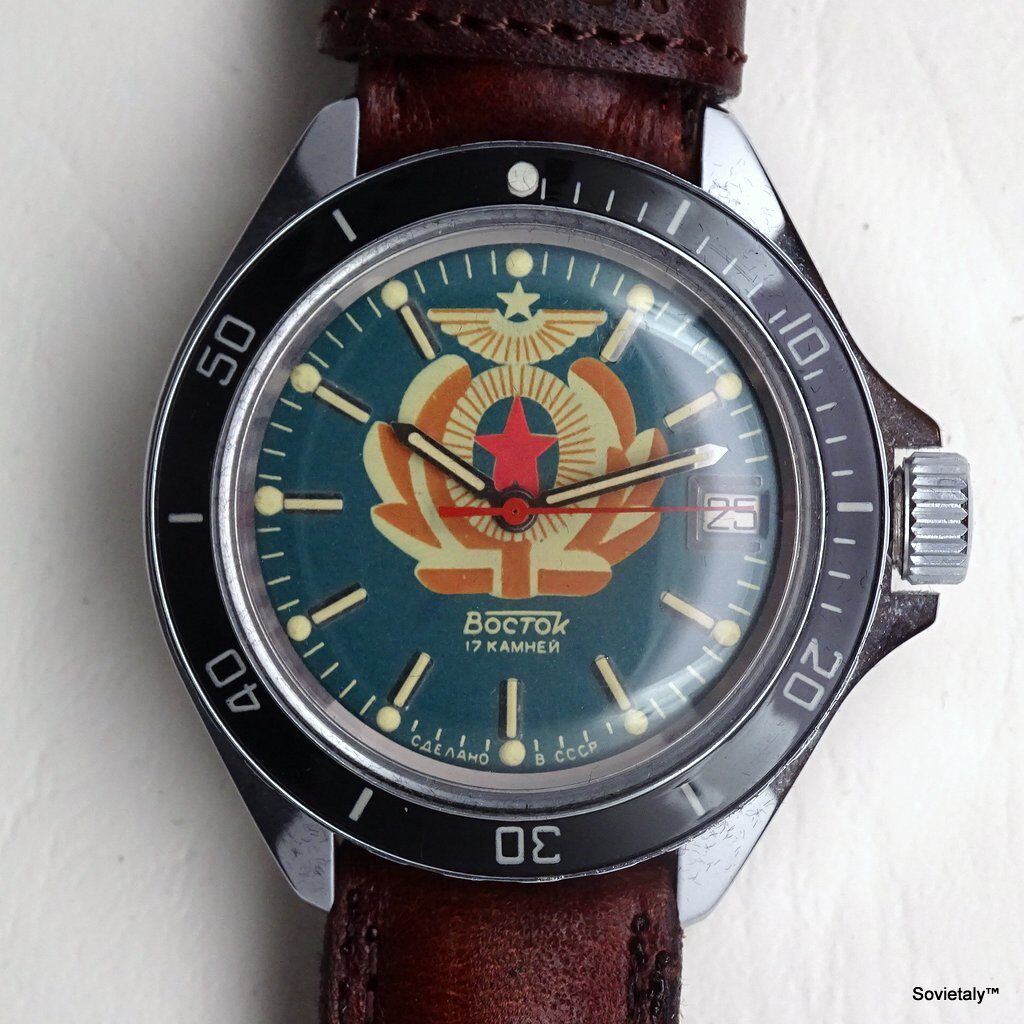Il Vostok Cosmonaut è uno degli orologi sovietici più affascinanti e ambiti dai collezionisti, spesso chiamato erroneamente anche Vostok Astronaut. Il suo design iconico è dominato dal profilo di un cosmonauta con casco spaziale, simbolo di un’epoca in cui l’Unione Sovietica guidava la corsa allo spazio. Ma chi è davvero il personaggio raffigurato? Tra teorie e leggende, scopriamo tutte le versioni e curiosità di questo orologio unico.
Le versioni del Vostok Cosmonaut
Tre sono le principali varianti di questo modello:
- Due sovietiche, prodotte negli anni ’80.
- Una transizionale post-sovietica, legata al periodo immediatamente successivo alla dissoluzione dell’URSS.
1. Versione sovietica con quadrante nero
Caratterizzata da una cassa Generalskie cromata (ref. 091xxx) e movimento Vostok automatico 2416b, è stata pensata principalmente per i mercati italiani e tedeschi. La ghiera unidirezionale con piccoli pallini è il suo segno distintivo.
2. Versione sovietica con quadrante blu
Molto più rara, utilizza la cassa Neptune con lo stesso movimento automatico Vostok. Il design del quadrante rimane pressoché invariato, ma il blu dona una nota ancora più “spaziale”.
3. Versione transizionale (post-sovietica)
Questa variante, spesso commercializzata come Amphibia, riprende lo stile delle versioni storiche ma si differenzia per cassa e ghiera. Il quadrante resta fedele all’originale con piccoli dettagli grafici aggiornati.
Discussione su Watchuseek
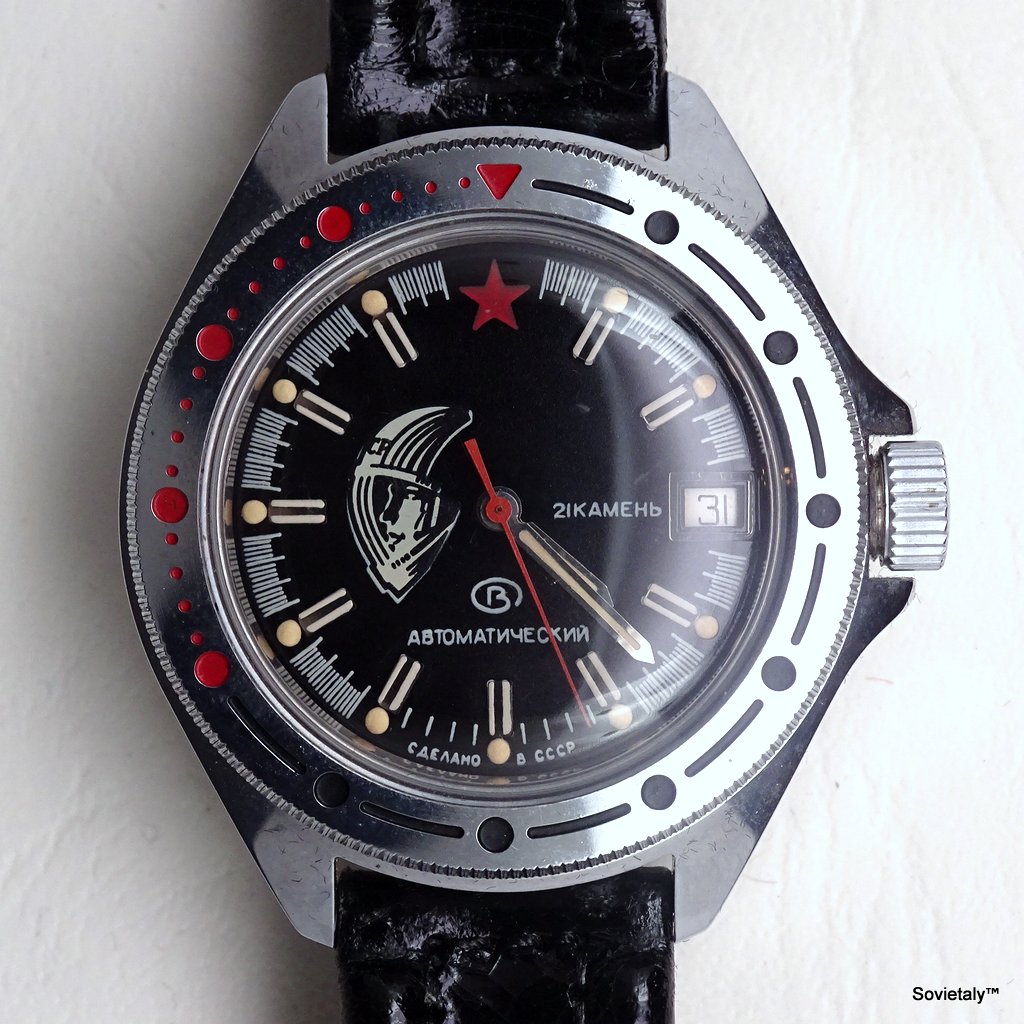
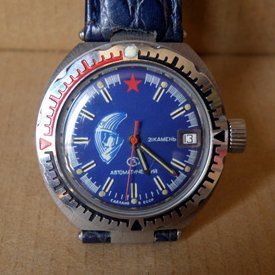
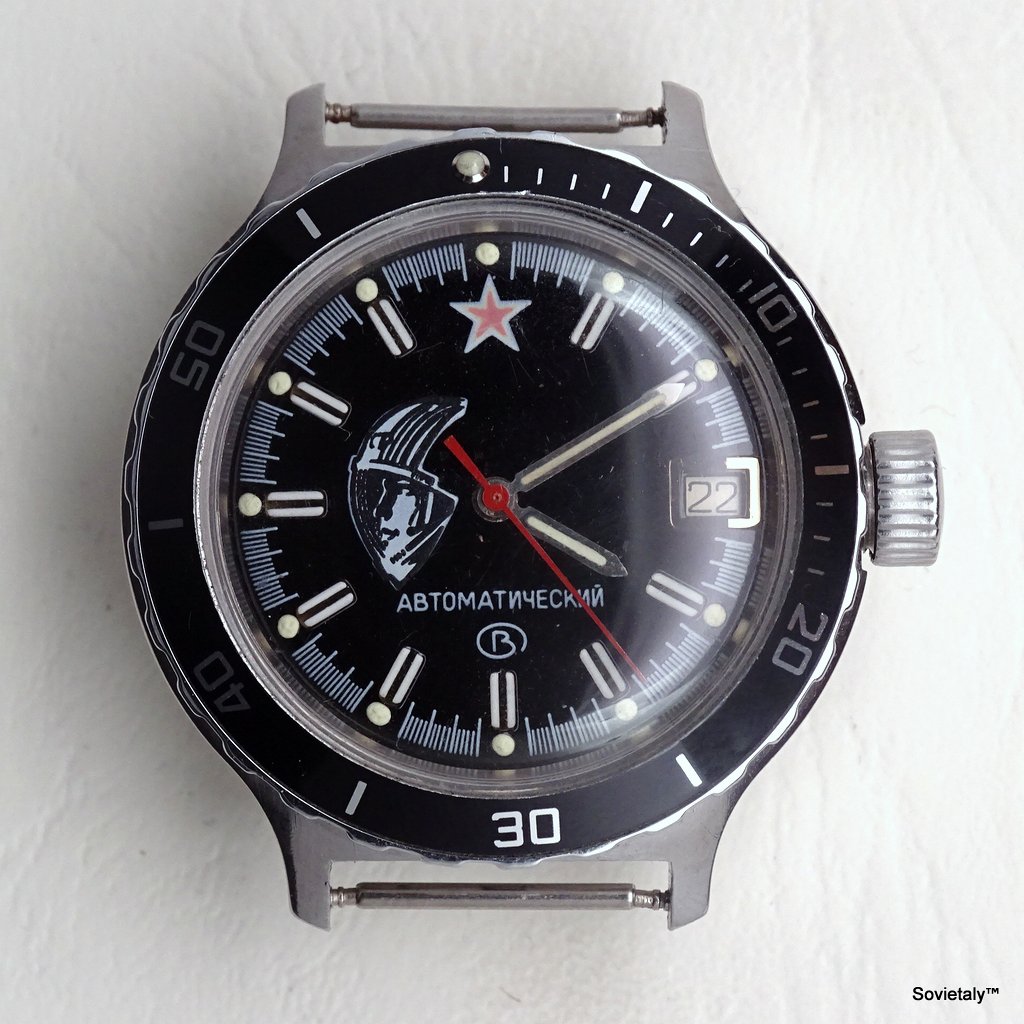
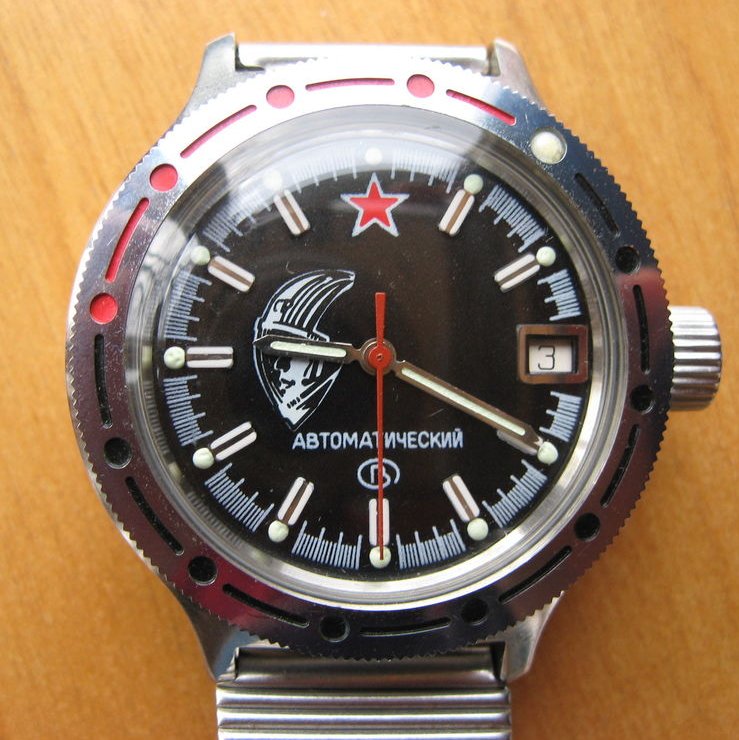
Il quadrante: il mistero del cosmonauta
Il fascino principale del Vostok Cosmonaut sta nel suo quadrante: un profilo stilizzato di cosmonauta con casco, su sfondo stellato. Analizzando attentamente i dettagli – riflessi su visiera, posizione della “P” sul casco – è possibile distinguere tra le versioni sovietiche e post-sovietiche.
Chi è il cosmonauta raffigurato?
Tre le ipotesi più diffuse:
- Yuri Gagarin – il primo uomo nello spazio, figura iconica in tutto il mondo.
- Anna Lee Fisher – proposta insolita, per via della sorprendente somiglianza, anche se improbabile per un orologio sovietico.
- Valentina Tereskova – la prima donna nello spazio, la teoria forse più affascinante e plausibile.
Articolo su Tereskova
Biografia di Gagarin



Esistono cloni del Vostok Cosmonaut?
Sì, esiste un modello simile prodotto da Slava: manuale, calibro 2428, quadrante chiaro e profilo meno definito. Curiosamente, su questi modelli compare il nome “Ю. А. ГАГАРИН” (Yuri Gagarin) in cirillico, rafforzando l’ipotesi che il volto del Vostok sia proprio quello di Gagarin.
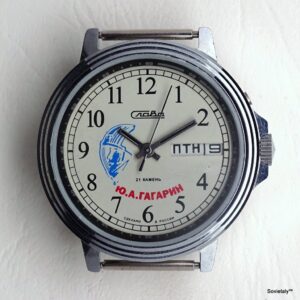
Differenza tra cosmonauta e astronauta
Cosmonauta: termine usato per gli esploratori spaziali formati dall’agenzia sovietica o russa; deriva dal greco “kosmos” (universo) e “nautes” (marinaio), cioè “marinaio dell’universo”.
Astronauta: si riferisce invece a quelli addestrati da USA, Europa, Canada e Giappone. Dal greco “astron” (stella), quindi “marinaio delle stelle”.
Approfondimento su StarLust
Approfondimenti su Gagarin, Tereskova e Anna Lee Fisher
- Yuri Gagarin: primo uomo nello spazio il 12 aprile 1961, missione Vostok 1.
- Valentina Tereskova: prima donna nello spazio il 16 giugno 1963, missione Vostok 6.
- Anna Lee Fisher: prima madre nello spazio, chimica e astronauta NASA, protagonista di molte curiosità storiche.
Articolo su Fisher

